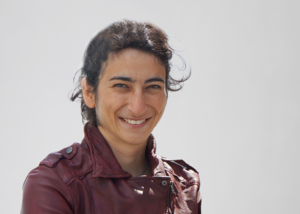The nature of dark matter is one of the most pressing questions in modern particle physics. The axion particle is an excellent candidate for dark matter. So far, however, axions exist only "on paper," predicted only in theoretical models.
What is particularly attractive about this novel type of particle is the fact that they could be used to kill two birds with one stone. In addition to the dark matter problem, physicists are trying to clarify a completely unrelated issue: Why no CP (charge/parity) violation occurs in the strong interaction. This force behaves with it differently than the weak interaction, with which this phenomenon occurs.
The RADES detector searches for cosmic axions originating from the dark matter halo that surrounds our galaxy like a sphere. Therefore, it is also called a haloscope. The principle: In a strong magnetic field, axions take on the properties of light particles (photons), which can manifest themselves as microwaves in a special experimental setup. However, this signal would be very weak. The RADES haloscope consists of a composite of small resonators that can be used to amplify the microwaves. This could be used to prove the existence of axions.

So far, RADES has been a detector in the CAST experiment at CERN, whose successor IAXO is currently being planned. CAST and IAXO specialize in detecting axions that originate from the Sun. However, these are not necessarily dark matter. With the RADES component, the discovery of cosmic axions is additionally possible. This is also a chance to solve the dark matter puzzle.
Currently, a prototype of IAXO is being planned at DESY in Hamburg, where the magnet and all components are being prepared and tested on a small scale - the project has accordingly been christened BabyIAXO. BabyIAXO consists of a 10-meter-long, ring-shaped magnet with a field strength of 2 Tesla, through which two tubes, each 60-centimeters in diameter, pass. The RADES haloscope will be installed in the cavity of the magnet.
The task of our group in the coming years is to tailor and test the setup of RADES for BabyIAXO. Specifically, we are working on describing possible observations and developing analysis methods, as well as designing and testing the Axion haloscope for BabyIAXO.
RADES consists of 20 researchers at eight institutions, and the babyIAXO experiment consists of 120 researchers at over 100 different institutions.
RADES/BabyIaxo at the MPP
Group members
E-mail address: e-mail@mpp.mpg.de
Phone number: +49 89 32354-extension
name
function
e-mail
extension
office
Cogollos, Cristian
Postdoc
cristian.cogollos
205
A.3.93
Dev Singh, Samridh
Student
samridh.dev
583
A.3.70
Döbrich, Babette, Dr.
Senior Scientist
babette.doebrich
205
A.3.95
García Barceló, José María, Dr.
Postdoc
jose.maria.garcia
583
A.3.70
Herwig, Louis
Student
louis.herwig
546
A.3.70
Kittlinger, David
Engineering
david.kittlinger
345
B.2.FL2
Kopaliani, Saba
Student
saba.kopaliani
583
A.3.70
Lobato de la Cruz, Diego Nicolas
Student
diego.lobato
546
A.3.70
Ortmann, Tobias
Postdoc
tobias.ortmann
583
A.3.70
Redl, Julia
Secretary
julia.redl
334
A.3.47
Sturm, Annette
Secretary
annette.sturm
482
A.3.45
Yang, Ziheng
Student
ziheng.yang
583
A.3.70
Group members
Phone number: +49 89 32354-extension
| name | function | extension | office | |
|---|---|---|---|---|
| Cogollos, Cristian | Postdoc | cristian.cogollos | 205 | A.3.93 |
| Dev Singh, Samridh | Student | samridh.dev | 583 | A.3.70 |
| Döbrich, Babette, Dr. | Senior Scientist | babette.doebrich | 205 | A.3.95 |
| García Barceló, José María, Dr. | Postdoc | jose.maria.garcia | 583 | A.3.70 |
| Herwig, Louis | Student | louis.herwig | 546 | A.3.70 |
| Kittlinger, David | Engineering | david.kittlinger | 345 | B.2.FL2 |
| Kopaliani, Saba | Student | saba.kopaliani | 583 | A.3.70 |
| Lobato de la Cruz, Diego Nicolas | Student | diego.lobato | 546 | A.3.70 |
| Ortmann, Tobias | Postdoc | tobias.ortmann | 583 | A.3.70 |
| Redl, Julia | Secretary | julia.redl | 334 | A.3.47 |
| Sturm, Annette | Secretary | annette.sturm | 482 | A.3.45 |
| Yang, Ziheng | Student | ziheng.yang | 583 | A.3.70 |
Key publications
Axion Searches with Microwave Filters: the RADES project
Alejandro Álvarez Melcón, Sergio Arguedas Cuendis, Cristian Cogollos, Alejandro Díaz-Morcillo, Babette Döbrich
JCAP 05 (2018) 040
DOI: 10.1088/1475-7516/2018/05/040
First results of the CAST-RADES haloscope search for axions at 34.67 μμeV
CAST Collaboration (A. Álvarez Melcón)
JHEP 21 (2020) 075
DOI: 10.1007/JHEP10(2021)075
Thin Film (High Temperature) Superconducting Radiofrequency Cavities for the Search of Axion Dark Matter
J. Golm, S. Arguedas Cuendis, S. Calatroni, C. Cogollos, B. Döbrich
IEEE Trans.Appl.Supercond. 32 (2022) 4, 1500605
DOI: 10.1109/TASC.2022.3147741
Scalable haloscopes for axion dark matter detection in the 30μμeV range with RADES
A. Álvarez Melcón, S. Arguedas Cuendis, C. Cogollos, A. Díaz-Morcillo, B. Döbrich(
JHEP 07 (2020) 084
DOI: 10.1007/JHEP07(2020)084
Key publications
Axion Searches with Microwave Filters: the RADES project
Alejandro Álvarez Melcón, Sergio Arguedas Cuendis, Cristian Cogollos, Alejandro Díaz-Morcillo, Babette Döbrich
JCAP 05 (2018) 040
DOI: 10.1088/1475-7516/2018/05/040
First results of the CAST-RADES haloscope search for axions at 34.67 μμeV
CAST Collaboration (A. Álvarez Melcón)
JHEP 21 (2020) 075
DOI: 10.1007/JHEP10(2021)075
Thin Film (High Temperature) Superconducting Radiofrequency Cavities for the Search of Axion Dark Matter
J. Golm, S. Arguedas Cuendis, S. Calatroni, C. Cogollos, B. Döbrich
IEEE Trans.Appl.Supercond. 32 (2022) 4, 1500605
DOI: 10.1109/TASC.2022.3147741
Scalable haloscopes for axion dark matter detection in the 30μμeV range with RADES
A. Álvarez Melcón, S. Arguedas Cuendis, C. Cogollos, A. Díaz-Morcillo, B. Döbrich(
JHEP 07 (2020) 084
DOI: 10.1007/JHEP07(2020)084
![[Translate to English:] Prof. Dr. Johannes Henn and Dr. Babette Döbrich (Photos: A. Griesch/MPP; privat))](/fileadmin/_processed_/9/5/csm_Henn-Doebrich_55fda93103.jpg)
